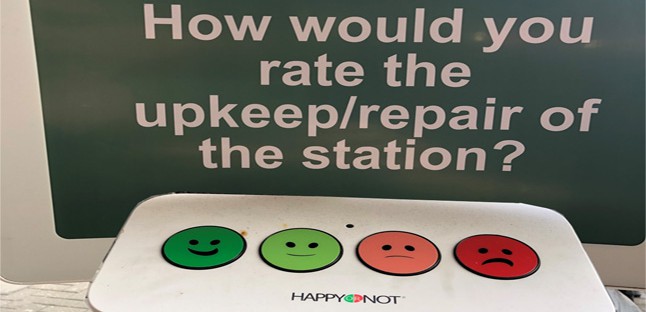Latest posts
A masterclass in creating value
What’s going on at parkrun?
Virtue-signalling all the way to the bank
Bud Light: brand purpose or virtue-signalling?
The Coddling of the American Mind, by Greg Lukianoff and Jonathan Haidt
Belonging, by Owen Eastwood
Such a simple thing
The Long Win, and The Scout Mindset
The Cult of We by Eliot Brown and Maureen Farrell
Coffee and covid modelling
By theme
Marketing strategy
Insight & metrics
Innovation & inspiration
Brand & positioning
Marketing communications
Business purpose
Leadership
By industry sector
Financial services
Retail
FMCG
Technology & start-ups
Consumer services
Business to business
Other sectors
By type
Books
Comment
Quotes
Thought leadership
If you like giving your opinion, you’ve never had it so good. The use of smiley and frowny faces to give instant ratings has led to a cornucopia of feedback opportunities. There’s a whole new industry built on online reviews – like Feefo, TrustPilot and Trip Advisor, a brilliant business model in which all the content is provided free of charge by the punters. All that’s before you even open the customary follow-up email asking whether you would recommend, whenever you interact with almost anyone.
But is it useful? That depends what they do with it. Consider airport security. One use of the instant feedback tool is to monitor the traffic flow in real time – a string of sad faces means the queues have built up and more staff need to get down there pronto. Any member of staff marshalling the flow of passengers into the security hall could make the same call. But perhaps they don’t. In effect it’s delegating the process to the passengers – and maybe it works.
It’s never been easier to get feedback, and it’s valuable – if used wisely. As you exit Charing Cross station in central London, there’s a sign that asks how you would rate the upkeep/ repair of the station, shown above. I was surprised to be asked. Perhaps they want to check whether passengers notice the state of the place. If so it’s a quick and cheap way to get an answer. As input to property management decisions, it’s less useful. I very much hope their planned maintenance programme is set by people who check the roof and guttering, and not influenced by those of us who barely look left or right.
A more standard use is to track performance over a longer period, for business KPIs on which individual and team bonuses may depend. The risk is that everyone’s looking for good scores, not for feedback in the learning sense. This isn’t necessarily good for business, as Warren Buffett wryly observed. Staffers may even invite happy customers to show their support, as described here. But “feedback” of this sort, whether prompted or not, is of limited value. Sad faces don’t give you any clue as to the cause, and a happy face could be for any number of reasons. You get a score but you don’t know why and you don?t know what to do to change it.
If, as the saying goes, “what gets measured gets done” then the key question is this: what is being measured? The things customers care about? Or the things that can be addressed – which may not be the things people care about. Worst is when an organisation gets fixated on some aggregate score that it can use as a KPI but which is not actionable. Only by checking with customers can a business know which measures really matter to them.
Measuring and unpacking customer satisfaction is a good thing. It’s almost free nowadays, so there’s no reason not to seek it and learn from it. But cust sat scores should not become an end in themselves. It’s essential to dig into the scores, to learn what’s behind them. Scores are a startpoint not the endpoint. Raise the bar, and there’s still room for innovation and improvement.
Latest posts
A masterclass in creating value
What’s going on at parkrun?
Virtue-signalling all the way to the bank
Bud Light: brand purpose or virtue-signalling?
The Coddling of the American Mind, by Greg Lukianoff and Jonathan Haidt
Belonging, by Owen Eastwood
Such a simple thing
The Long Win, and The Scout Mindset
The Cult of We by Eliot Brown and Maureen Farrell
Coffee and covid modelling
By theme
Marketing strategy
Insight & metrics
Innovation & inspiration
Brand & positioning
Marketing communications
Business purpose
Leadership
By industry sector
Financial services
Retail
FMCG
Technology & start-ups
Consumer services
Business to business
Other sectors
By type
Books
Comment
Quotes
Thought leadership
